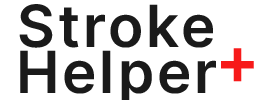The app that saves lives.
AI-powered early detection of strokes
Recognize the signs.
Gain Time.
Stroke?
Detect. Act. Save.
Designed for emergencies. Easy for everyone to understand.
With Stroke Helper*, you can detect possible stroke symptoms within seconds – using facial analysis, speech recognition, and a simple checklist.
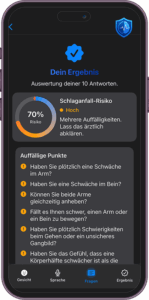
*This is a prototype. Learn more here*.
Why rapid help matters.
Facts you should know.
200,000 new cases annually
In Germany, around 200,000* people suffer a stroke for the first time every year – many of them completely unexpectedly. A rapid response can save lives and prevent permanent damage.
Detect faster – treat better
"Time is Brain- In the case of a stroke, every minute counts: around 32,000 brain cells die every second*. The earlier it is detected, the better the chances of recovery.
* Quelle: PubMed – National Library of Medicine
Help when no one is watching.
Many stroke patients are alone at the critical moment – Stroke Helper helps with detection*, even when no doctor is nearby. Simple. Fast. Digital.
⚠️ Important note: StrokeHelper does not replace no medical diagnosis.
The app can only detect symptoms and indicate possible signs of a stroke.
In case of suspected stroke, always: call emergency services immediately!
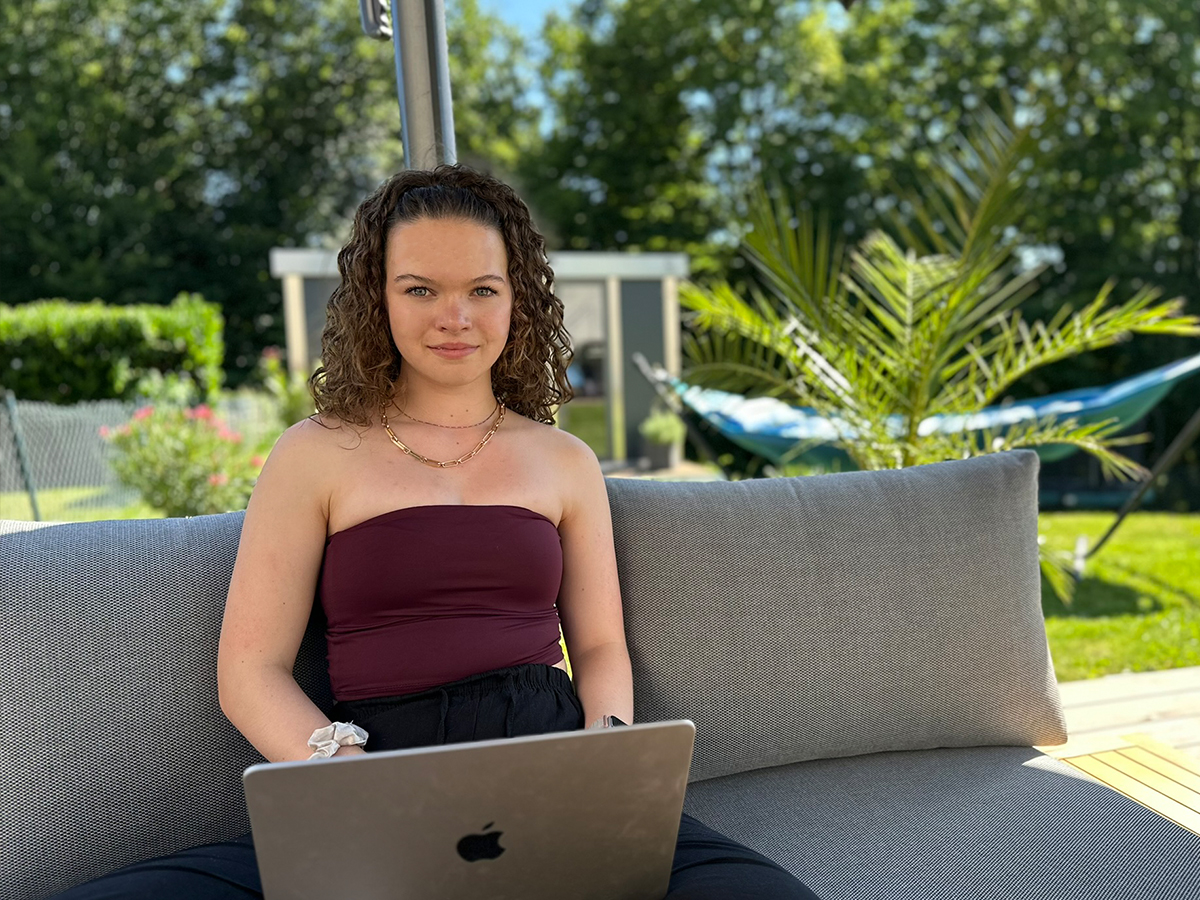
When curiosity turns into innovation
How it all began
The idea for Stroke Helper was born after attending the “Long Night of Science” (July 2024) at the University Hospital in Homburg during a lecture on strokes.
What began as fascination turned into a project: together with two school friends, I participated in Jugend forscht junior and later also in Jugend forscht successfully participated.
Since then, the topic has never left me – I wanted to understand how symptoms, risks, and modern AI methods can work together.
Today, I can present the first prototype of my app.
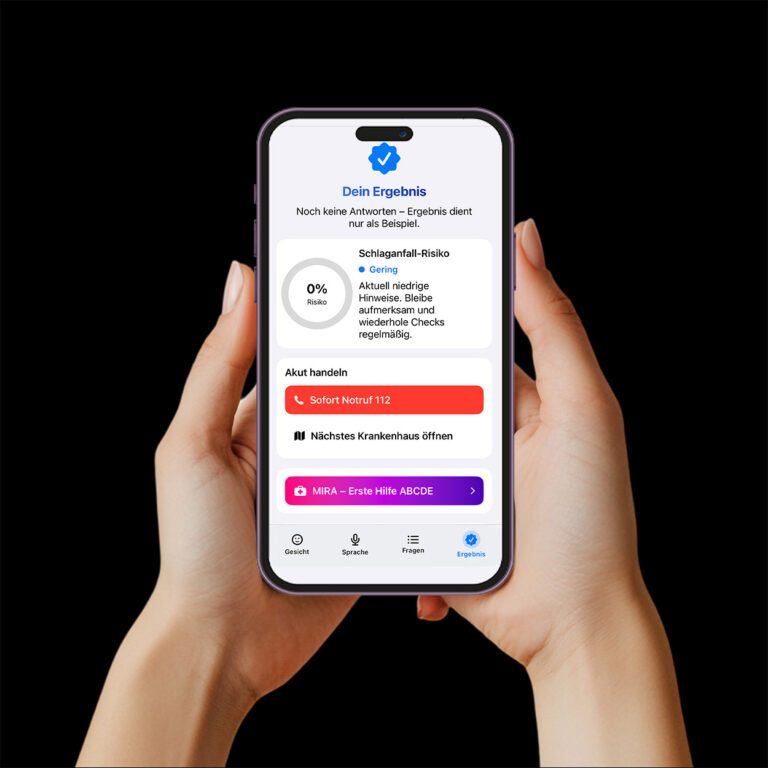
Good to know
Stroke Helper is already usable as a prototype – but not yet officially available in the App Store.
I’m continuing to develop the app and improve it step by step.
Features at a glance
Onboarding with risk assessment
Right from the initial setup, Stroke Helper analyzes your personal risk factors – anonymously and in compliance with data protection regulations.
Facial analysis
Speech analysis
Compare current speech with your stored reference – if slurred speech is detected, a warning is issued.
Symptom checklist
With just a few questions, you can check for additional warning signs – easy to use, even in stressful moments.
HealthKit integration
Uses existing data such as age, weight, or medications – for a more accurate risk assessment.
MIRA – First Aid Coach
If the app detects possible stroke symptoms, MIRA guides you step by step through first aid measures — following the well-known ABCDE protocol.
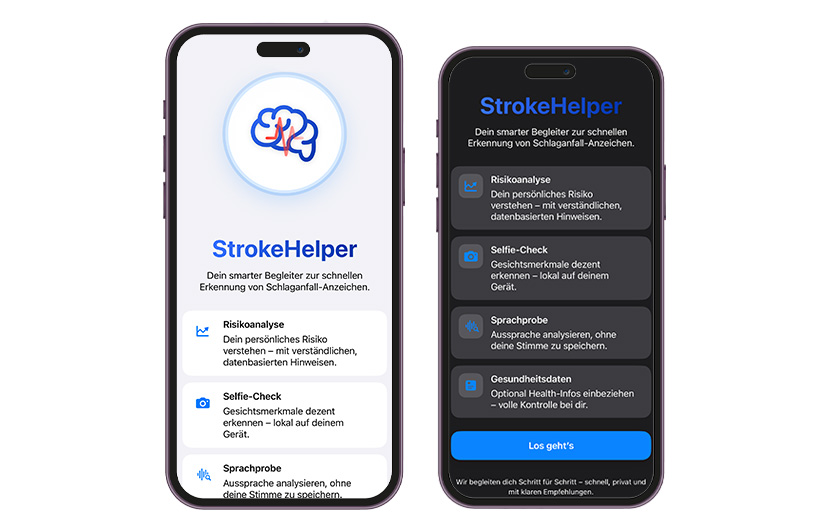
Simple & user-friendly
The Stroke Helper interface is designed to remain clear and easy to understand—even in stressful situations. You’re guided step by step through each feature, so you don’t have to spend time thinking or searching. This lets you use the app quickly and safely in an emergency.
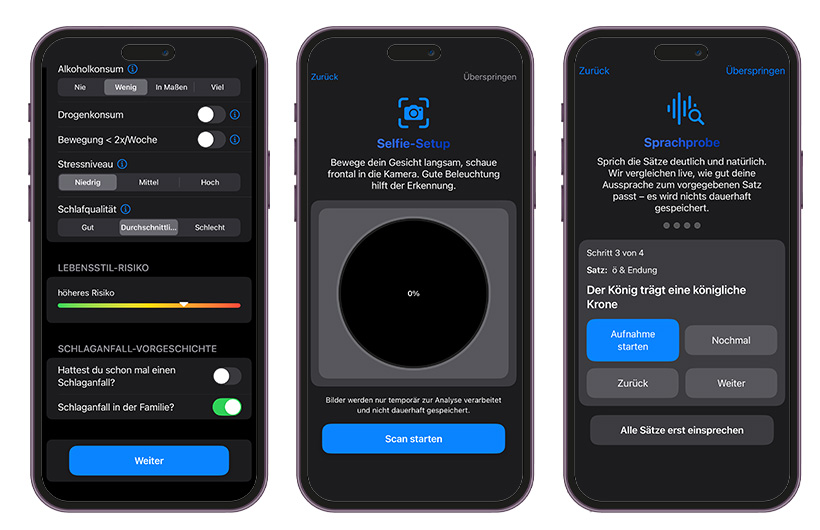
Your personal onboarding
When you first launch Stroke Helper, your personal profile is set up:
You can upload a profile picture, save a short voice recording, and receive an initial risk assessment.
This way, the app is tailored to you right from the start and can recognize symptoms even more accurately later on.
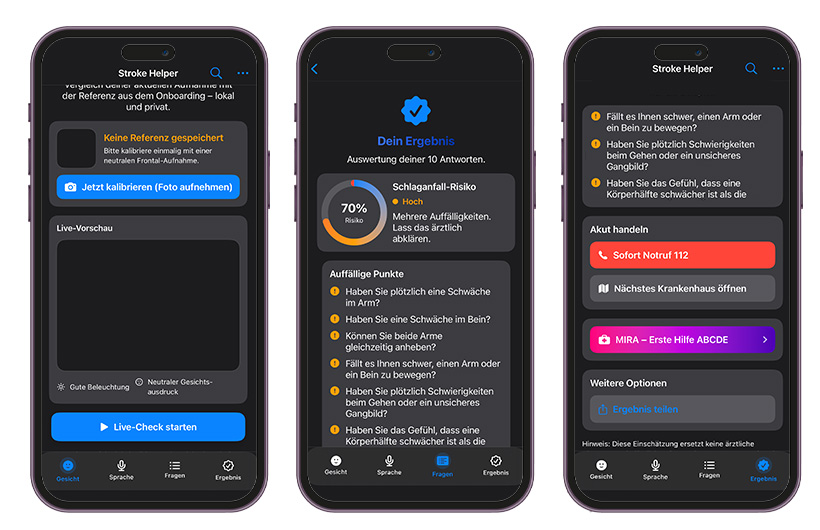
In an emergency, clarity counts
Stroke Helper shows you the result instantly and clearly—so no time is lost.
Whether unremarkable or critical: you know at a glance what to do.
In an emergency, you can call emergency services directly from the app or get step-by-step support from MIRA, the integrated first aid assistant.
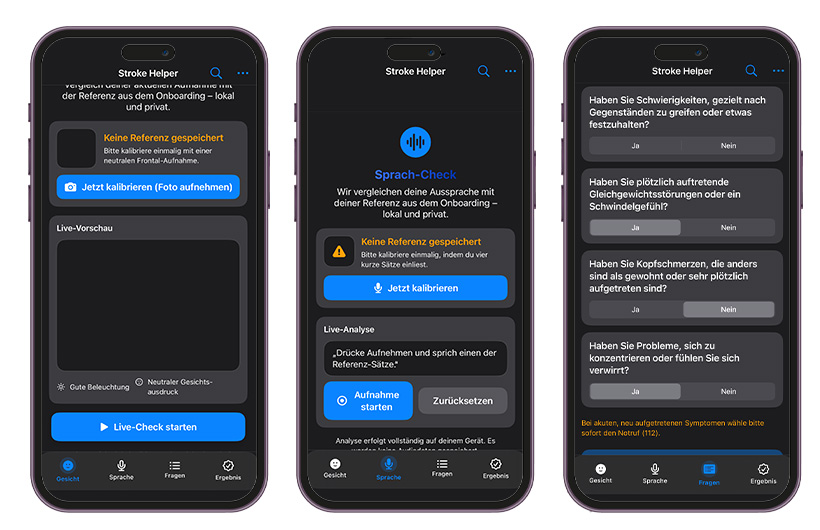
Simple – everything at a glance
Die MainTabView ist dein Ausgangspunkt in Stroke Helper.
Hier findest du alle wichtigen Bereiche wie Gesichtsanalyse, Sprachtest und Checkliste übersichtlich angeordnet.
So hast du jederzeit schnellen Zugriff auf alle Funktionen der App.
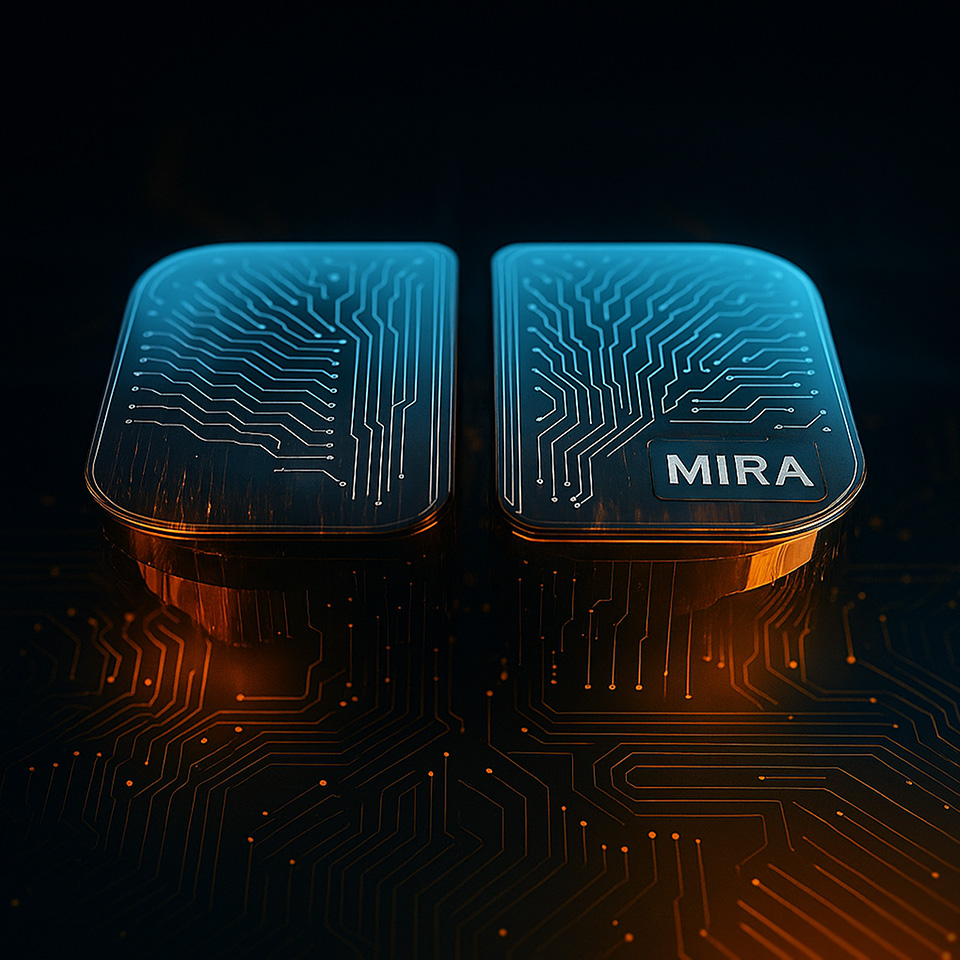
Artificial intelligence from the very beginning
From the very beginning of development, it was clear: Stroke Helper would not be possible without AI.
The first research efforts with simple models such as the Personal Image Classifier laid the foundation for the app’s ability to detect irregularities at all.
Later, additional tools for image and speech analysis were added, making it possible to detect symptoms such as slurred speech or facial paralysis.
It’s important for me to emphasize: to make early detection even more accurate, both I, the app, and the AI need more data and information – the learning process is therefore continuously ongoing.
Stroke Helper Lab
Central platform for AI training
Start: with human involvement (doctors, experts validating data)
Goal: continuous improvement of detection accuracy
Stroke Helper Lite
Rollout version for hospital staff
Used for data collection in real environments
Provides diagnostic capabilities
Sends data & results back to the Lab → strengthens training
AI MIRA – in-house development
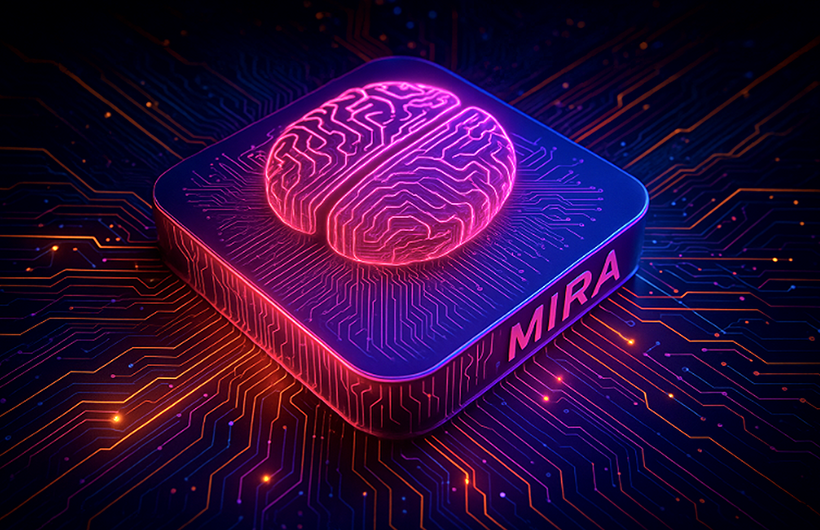
StrokeFaceAsymmetry: Analysis of facial asymmetries (mouth, eyes, cheeks, eyebrows)
StrokeFaceCNN: Deep learning model (Convolutional Neural Network) for image & 3D FaceID recognition (TrueDepth data, facial scans)
FusionCalib: Fusion of image, speech, and checklist data for higher precision
Pattern recognition & algorithm development → continuous improvement of early detection in new app versions
Stroke Helper App
For patients & relatives
Detects symptoms in time (face, speech, checklists)
Supports in emergencies: action guidance & emergency call option
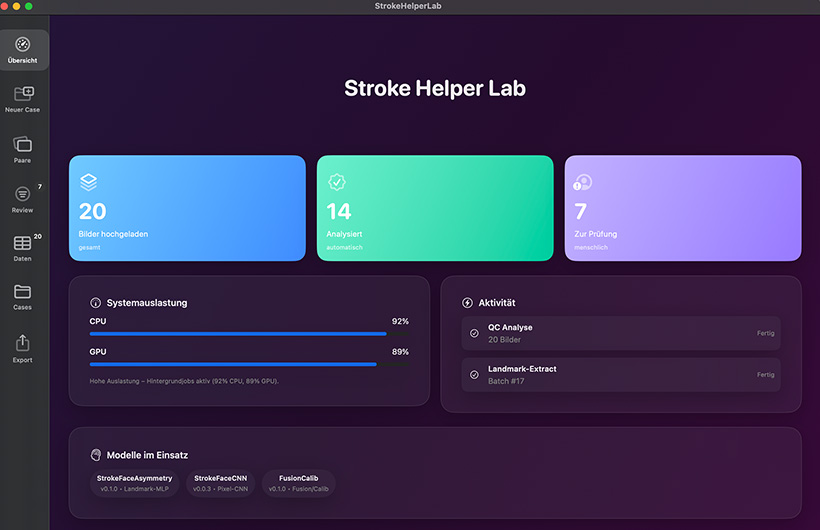
Stroke Helper Lab (laboratory)
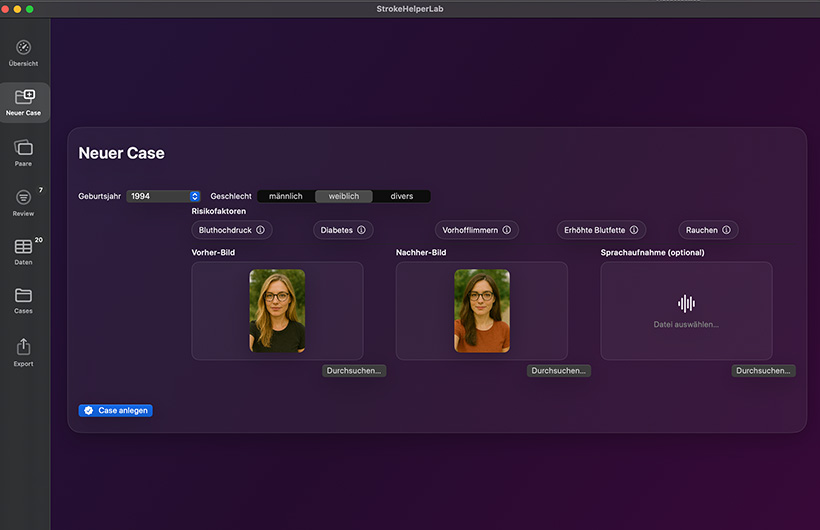
New Case – Start of Training
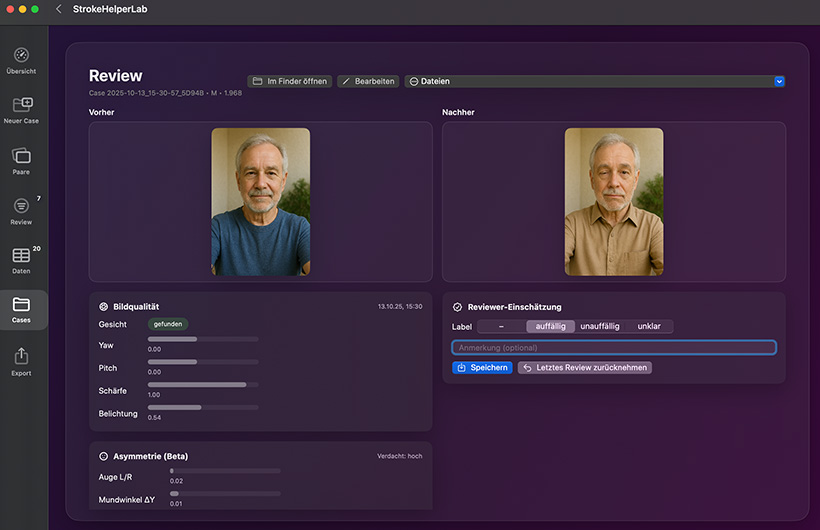
Review – Evaluation and Assessment
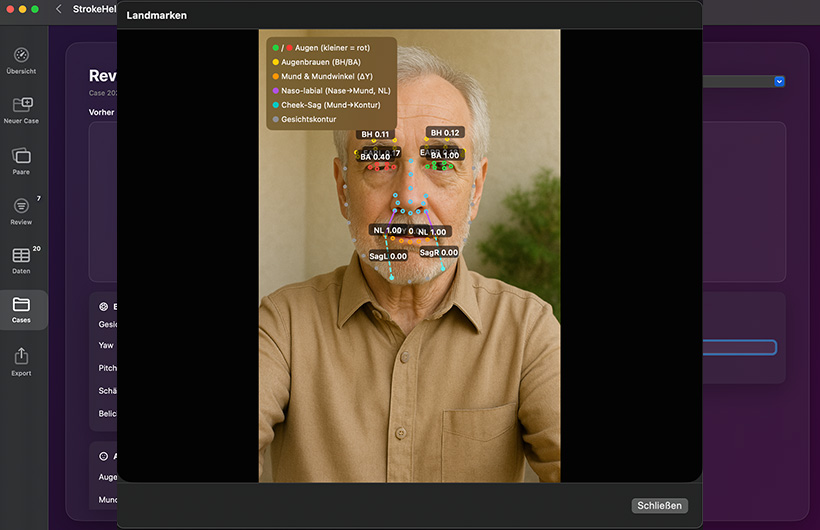
Landmark Analysis – Detecting the Smallest Changes
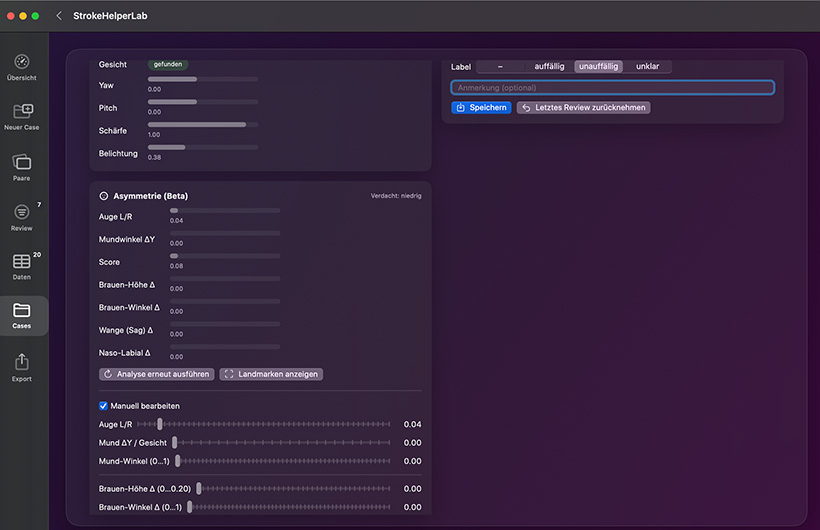
Manual Validation – Human and AI in Collaboration
What’s next for StrokeHelper?
Stroke Helper is currently a working prototype. It demonstrates that it is possible to detect stroke symptoms in speech and facial expressions using AI.
But my goal is bigger: I want to continue researching and developing the app so that one day it can truly save lives.
Intensify research
I want to engage in dialogue with experts and doctors, and perhaps also speak with patients who are willing to share their experiences.
Raise awareness & promote prevention
It’s important to me to raise more awareness about strokes and encourage people to live healthier and more consciously.
If you’d like to support me—whether with knowledge, experience, or via a partnership—I’d be happy to receive your email at E-Mail.
Together, we can help save lives.
Advance the technology
To make early detection even more reliable, the AI needs more data. Every new insight helps improve the app step by step.
Collaboration with strong partners
To successfully realize Stroke Helper, I want to collaborate with partners from research, healthcare, and industry who share this vision.
